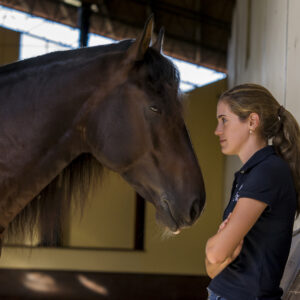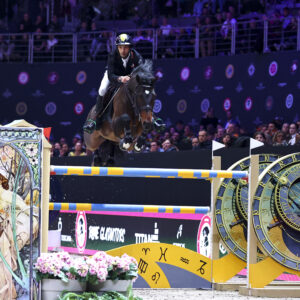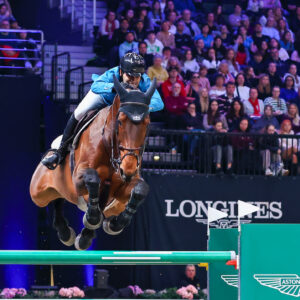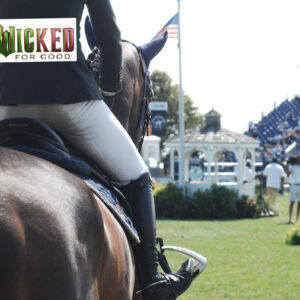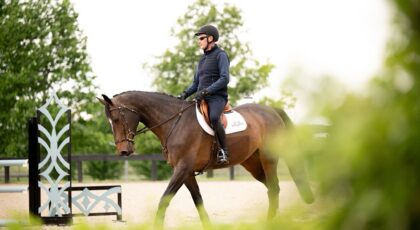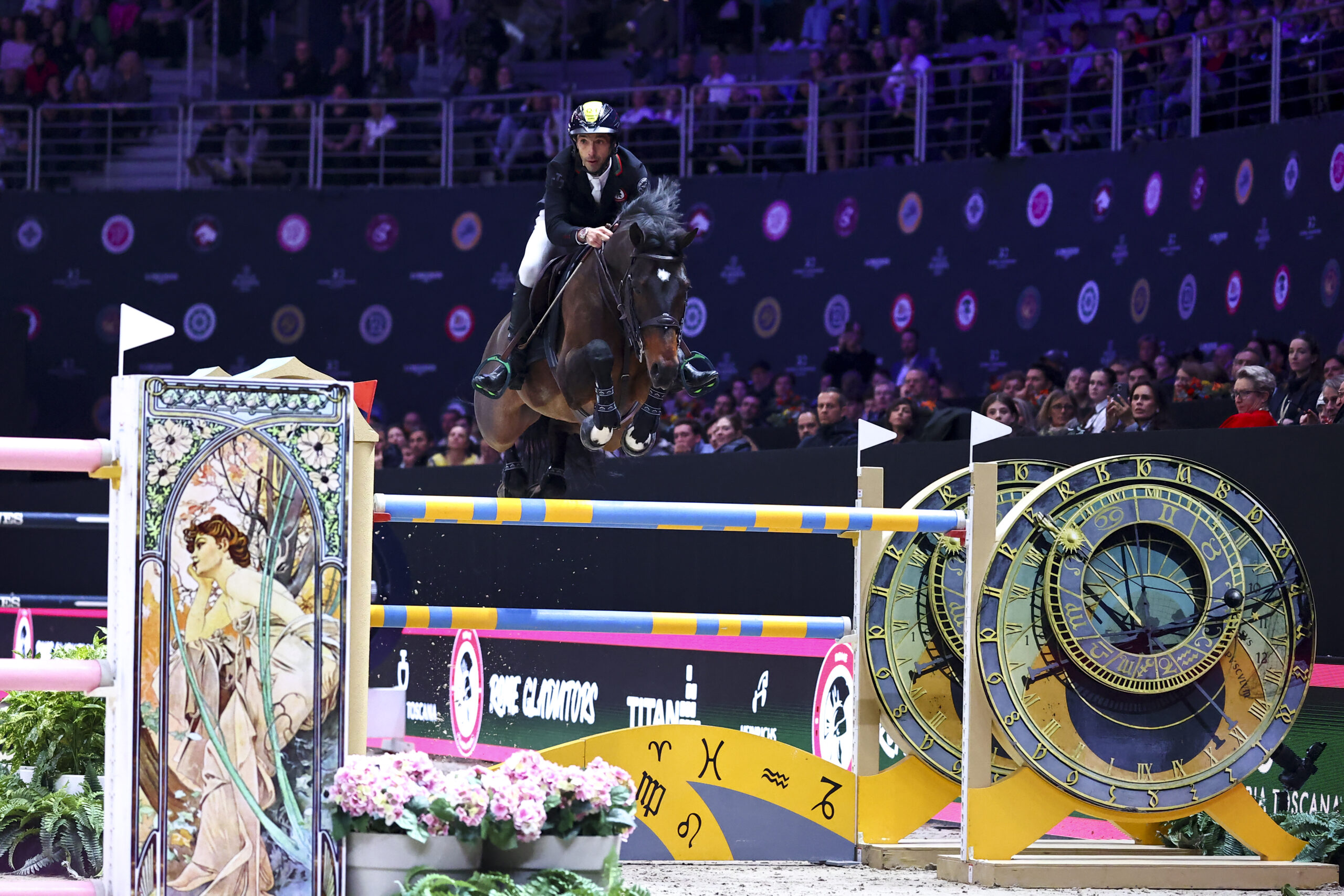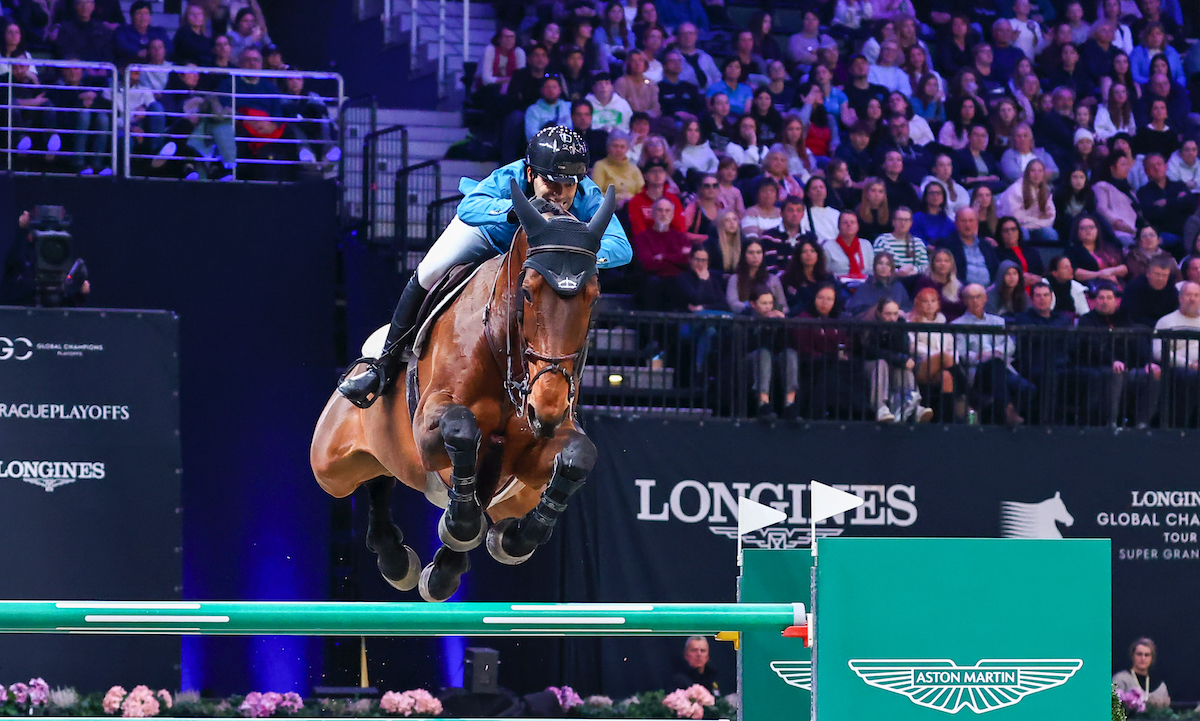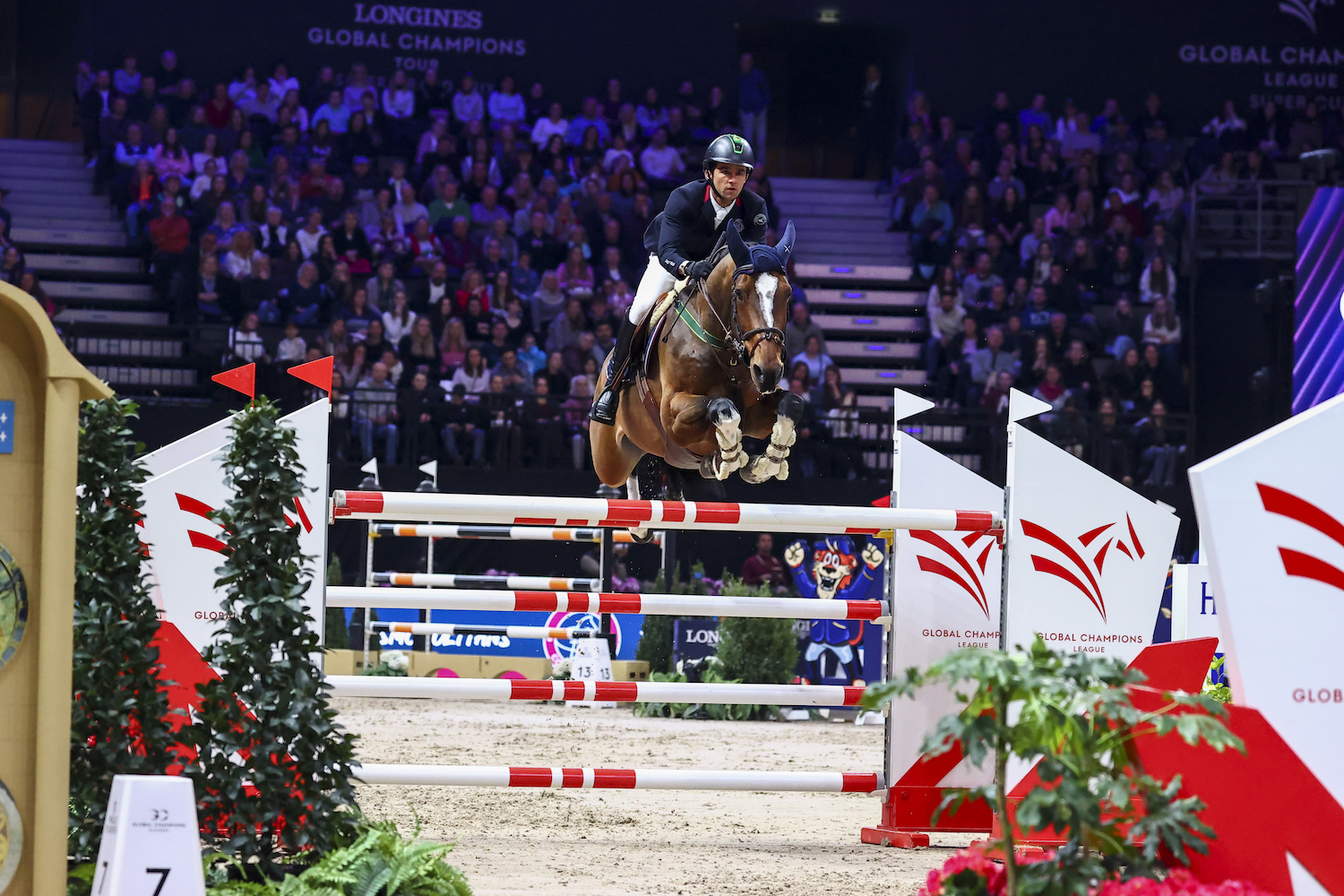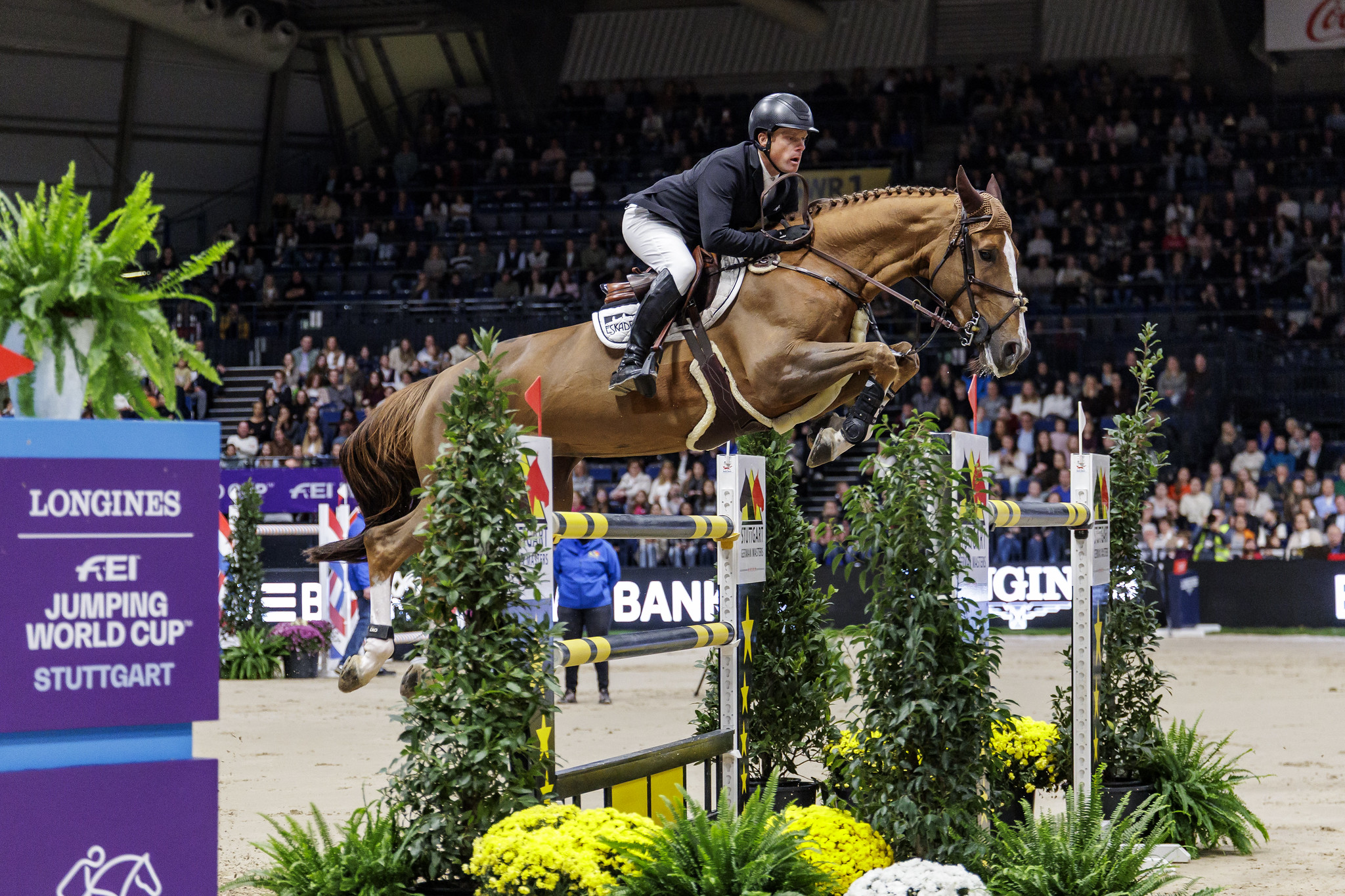Have you ever dealt with a horse with an unsafe hind end? You know, the type that could wheel around, kick you in the forehead and land you in the emergency room? These types of horses can be dangerous to be around, but with the right approach, they can be taught to “kick” their dangerous habit.
What is your Perception?
Step one in dealing with a kicker is to ask yourself “How does it make me feel when a horse kicks out violently?” Usually we view this behavior from a victim perspective.
How we see it: It’s disrespectful, dangerous and unsafe for a horse to kick at humans.
How the horse sees it: I feel threatened, unsafe, and I only know how to respond with violence, anger, and defensiveness.
In other words, if you meet a horse who only knows how to respond to violence with more violence (e.g. hitting them with a whip, working them hard without understanding, punishing them with negative reinforcement), you will never correct the situation.
For horses known to kick without warning and duplicity, I recommend seeking the help of a highly skilled trainer. Retraining this type of horse requires a refined skill-set that uses non-violence as well as a judicious use of force.

©flickr/carterse
Emotional Composure
How do you approach a horse that kicks out violently? You have to be skilled in your body awareness to approach this kind of horse without emotion. Check in with yourself… is your mind clear? Do you have any extraneous thoughts running through your head? Are you angry or fearful, or focused on the task at hand? Do NOT approach or handle a horse with this kind of background if you are feeling angry or fearful.
Controlling the feet in a nonviolent way
The key to success in rehabbing a kicker is to be able to control their feet in a nonviolent way. I suggest the following exercise to start teaching this idea:
Your goal is to teach your horse to stand quietly in front of you by using the whip as a visual aid to block the horse side to side when he dances around. This will help an anxious horse connect with his feet, and it will give you the power of controlling his feet.
Take your horse into an arena. This is the tricky part. What YOU do as a horseman and HOW you respond to your horse is the key point, and if you’re not comfortable with the timing and effectiveness of this exercise, please hire a trainer.
What NOT to do:
Don’t give your horse time to look around and take things in, or react to anything spooky. This would allow him the opportunity to move HIS feet instead of the other way around. If your horse walks into the arena and starts dancing around out of anxiety, this is where the real work begins. Your priority should be to teach the horse to halt (and thereby controlling the feet) in a nonviolent way.
Do not respond to your horse by yanking on the lead rope, yelling, or hitting him with the whip. He needs to stand quietly and focus on you.
Instead, do the following:
Stand in front of your horse and block their head position with very strong body language.
Use your dressage whip as a visual aid. If your horse dances to the left, lift the whip in your left hand vertically upwards to make a visual wall that your horse does not go through. If your horse goes through the whip you can gently tap them on the shoulder.
You want to give your horse plenty space on either side, so hold the whip about 3-4 feet away from the horse’s shoulder.
If your horse dances to the right as a result just cross your whip under your arm and use it as a visual aid on the right side of the horse to ask him to stop.
Do this repeatedly until the horse takes a moment (it might be a very short moment in the beginning) to stand, think and connect with his feet. Be very quick to drop the whip and give praise after he stands. Rinse and repeat.
Caution…
Your horse might get really mad! If he is used to controlling you and moving your feet he will have a very strong reaction. He will probably act out by rearing and kicking out. This is normal temper tantrum horse behavior when they are used to getting their way and new rules are established. It’s like telling a toddler in the grocery store “No more cookies”, and they throw themselves on the floor and have a big cry. It’s ok, and normal. However, if this kind of behavior terrifies you, then you need to hire a trainer that can deal with the temper tantrum without losing emotional control.
Eyes on Me
If your horse does this exercise and turns their head away from you to look at something, poke him and turn his head back towards you. I like to call this the “Jealousy Game” or “Eyes on Me”. Looking away is avoidance behavior; demand that he keeps his head focused towards you.
Don’t Back Up!
Whatever you do throughout this exercise, never back up and invite the horse into your space. If the horse gets too close, tap him on the chest and ask him to move away from you. Take a lunge step, use your hands like a scary monster and ask him to move away. When a horse puts his shoulders/chest into your personal space it should be considered rude behavior. Do not allow him into your personal space. Do not back up!

©flickr/netg15
Get Submissive
After you lay down the law using the whip as a visual aid, you can switch your tactics and approach the horse more as a friend. This is after the horse is halting in front of you, politely, just from using the whip as a visual aid. The horse should be licking and chewing at this point when you put them in this position. If the horse is presenting these behaviors, it’s time to get submissive.
In order to do that, get down on one knee in front of your horse. This makes you less threatening, and can help build rapport and trust. Offer your hand to the horse to sniff, but DO NOT physically touch the nose of the horse. Let the horse touch you first. The key point here is that you only reciprocate touch. If you reach this moment and touch the horse too much and he turns his head away, then you know you the horse isn’t comfortable with your touch. In other words, you have a lot of work to do to gain his trust. If you reach this point and the horse sniffs you, then you touch his nose, and he maintains the connection, then you are in good shape!
Safely picking up the feet
Do not try to pick up your horse’s feet until you can safely do the aforementioned exercises. Why? Because now we are transitioning to human touch, and if he isn’t respectful enough to let you control his feet or engage and connect with you, he sure as heck isn’t going to let you physically touch him.
However, if you have made it through the previous exercises and are asking for the feet with trepidation I recommend the following exercise to get your horse more comfortable with touch and giving a hind foot:
Take a long lead rope and make a loop at the end. Loop the lead rope around the pastern of the horse and ask the him to yield to the pressure and give the hoof.
Release the pressure on the rope immediately after the horse gives. This should be a game, and you can even do it in motion. I would also recommend using a verbal cue with the pressure of the rope. Most horses that are resistant with their hind ends comes around after a little work with this game.
In Conclusion
When your horse acts out at you, don’t play the victim and think “Oh my goodness, he’s being bad!” Instead, take a moment and ask yourself why he is responding with violence. Be the adult and respond to the violent horse with nonviolence. Punishing a horse that acts out by kicking or biting does nothing to ameliorate the situation. Instead, find a centered place in yourself and teach the horse to respond to you by controlling their feet. It might be a bit challenging at first, but this is the simple and easy way to turn distrust into trust.
About the Author
Ashley Haffey is a dressage trainer and instructor at Lane Cove Dressage in Beaver Dams, NY. She focuses on retraining OTTB’s from the track and starting young horses under saddle.


 October 12, 2016
October 12, 2016 






